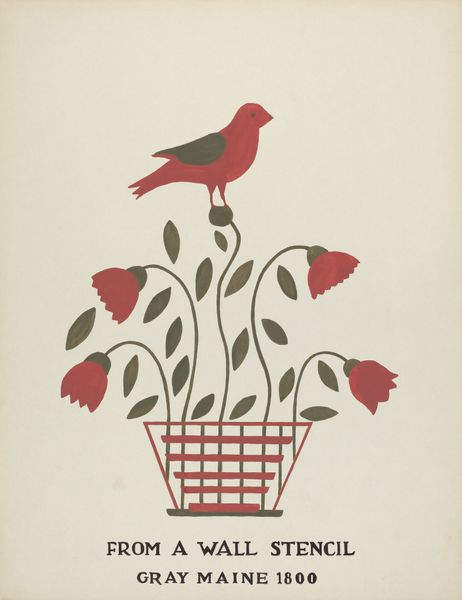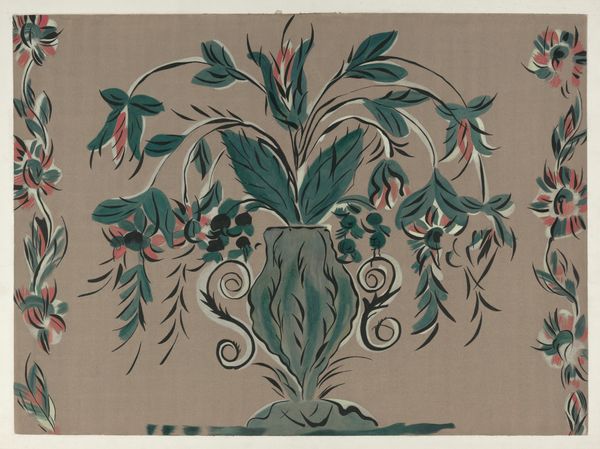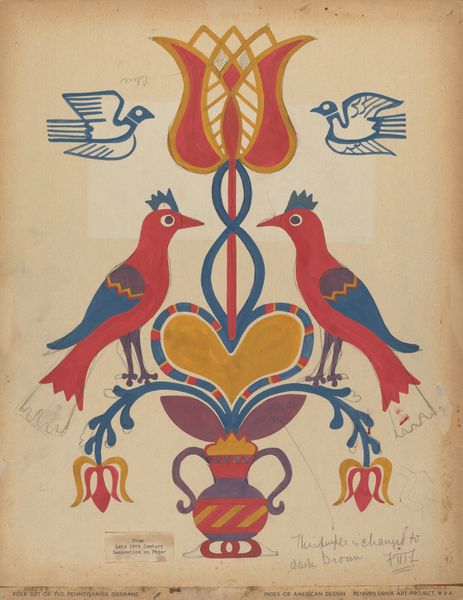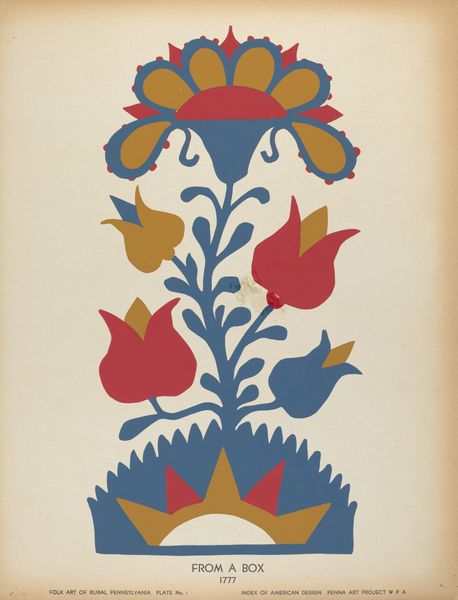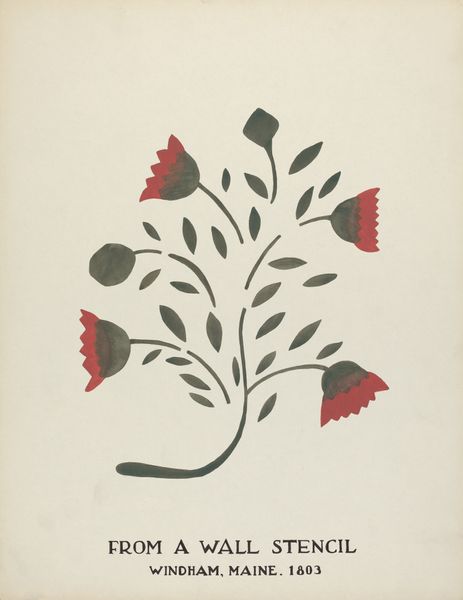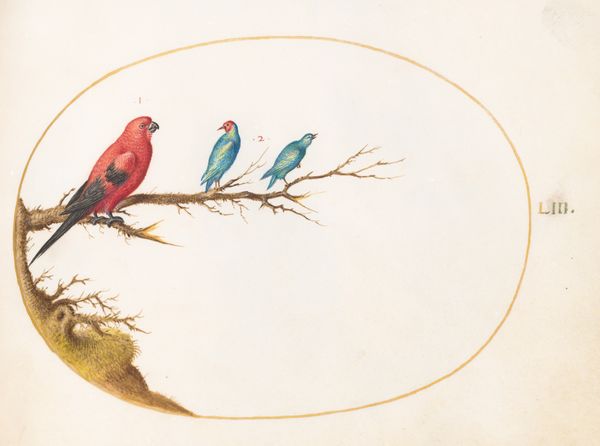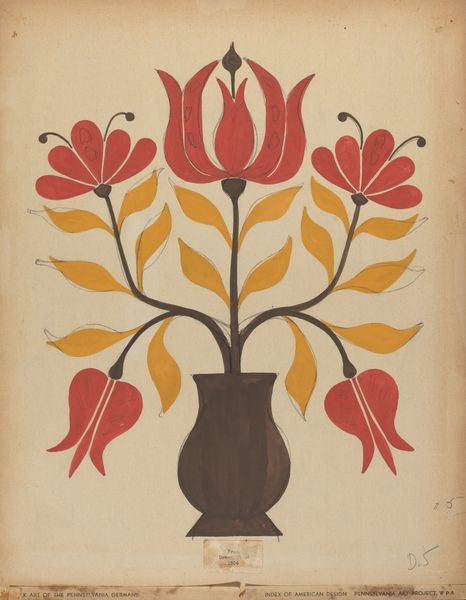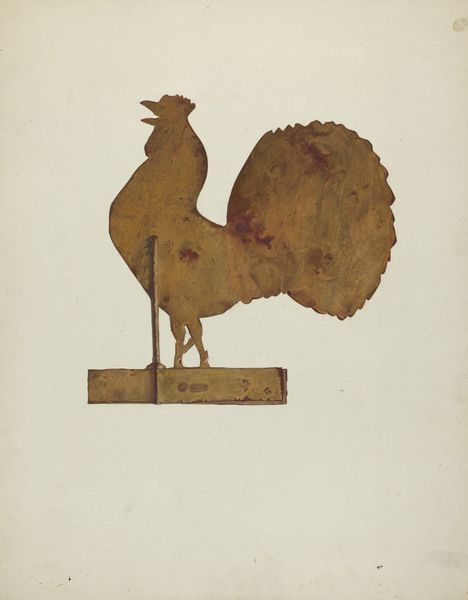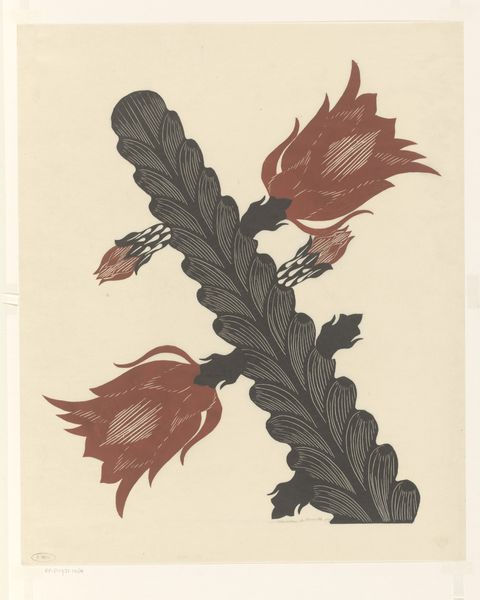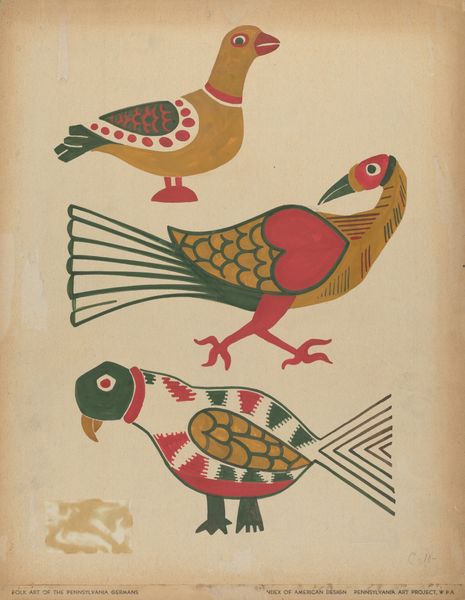
Design from Gray, Maine 1800 (no. 1): From Proposed Portfolio "Maine Wall Stencils" 1935 - 1942
0:00
0:00
drawing, pencil
#
drawing
#
folk-art
#
geometric
#
pencil
#
abstraction
#
watercolour illustration
Dimensions: overall: 45.7 x 35.5 cm (18 x 14 in.)
Copyright: National Gallery of Art: CC0 1.0
Editor: This drawing by Mildred Bent, titled "Design from Gray, Maine 1800," made between 1935 and 1942, presents a stylized tree and bird rendered in pencil. I find the simplicity of form rather charming, and wonder about its intended use as a wall stencil. What can you tell me about this piece? Curator: Well, given its likely basis in an earlier stencil, dating back to around 1800, we can consider its materiality not just in terms of pencil and paper, but as a reproduction of a craft-based form of labor. Early American stencils like this one provided accessible decoration for homes. Think about the social context; printed wallpapers were expensive and largely available only to the upper class. Editor: So, stencils provided an alternative for working-class homes? Curator: Precisely. Bent’s work revives that practice, documenting the material culture of early Maine. It's not simply an image; it represents a means of production, of making art accessible to a wider range of consumers. Consider how the materials would have been sourced. The pigments, the paper… it's all intertwined with the social fabric. Editor: I see. It shifts the focus away from purely aesthetic concerns to the practicalities of production and the democratization of art. Are we looking at something similar to what William Morris did with wallpaper in England during that period? Curator: There's a parallel to be drawn with Morris, although Bent seems to be coming at this with a keen interest in re-engaging folk art for her own contemporary, art-historical purpose, by documenting and preserving a specific historical stencil design that speaks volumes about vernacular material practices of the early 1800's. Editor: That's fascinating. I hadn't considered the social and economic dimensions so directly. Thanks for clarifying how Bent’s drawing encapsulates so much more than just its surface appearance. Curator: It shows how looking at the "stuff" of art can really unlock a deeper understanding, right? It also allows us to question conventional high art/craft hierarchies and assumptions.
Comments
No comments
Be the first to comment and join the conversation on the ultimate creative platform.
